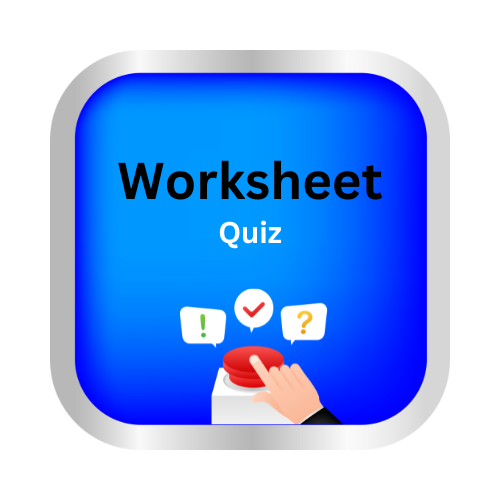Thunderstorms and Cyclones
Key Notes :
Thunderstorms:
- Definition: Thunderstorms are violent weather events that involve lightning, thunder, and heavy rainfall.
- Formation: They form when warm, moist air rises rapidly, cooling and condensing to form clouds, which causes the release of energy in the form of lightning.
- Components of Thunderstorms:
- Lightning: A sudden electrical discharge in the atmosphere, producing a bright flash of light.
- Thunder: The sound caused by the rapid expansion of air around the lightning bolt.
- Heavy Rainfall: Caused by the condensation of water vapor in the storm clouds.
- Hail: In strong thunderstorms, hailstones may form due to the strong updrafts in the storm.
- Safety Measures:
- Stay indoors during a thunderstorm.
- Avoid using electrical appliances.
- Do not shelter under trees or open fields.
- Listen to weather updates for warnings.
Cyclones:
- Definition: Cyclones are large, rotating storm systems characterized by low-pressure centers and high winds, often accompanied by heavy rain.
- Types of Cyclones:
- Tropical Cyclones: Occur in tropical regions over warm oceans (e.g., hurricanes, typhoons).
- Extratropical Cyclones: Form in temperate regions, associated with cold and warm air masses.
- Formation of Cyclones:
- Cyclones form over warm ocean waters when the temperature is above 27°C, causing evaporation and rising warm air.
- The Coriolis effect causes the rotating motion of the cyclone, and low-pressure systems intensify it.
- The storm grows stronger as it gains energy from the ocean and can cause massive destruction when it reaches land.
- Parts of a Cyclone:
- Eye: The calm center of the cyclone, where weather conditions are clear.
- Eye Wall: The ring of intense thunderstorms surrounding the eye, with the strongest winds.
- Rainbands: Spiraling bands of clouds and rain extending from the eye wall.
- Impacts of Cyclones:
- Strong winds can uproot trees, damage buildings, and cause widespread destruction.
- Heavy rains can lead to flooding.
- Storm surges can cause sea-level rise along coastlines, leading to coastal flooding.
- Safety Measures:
- Stay informed through weather forecasts and warnings.
- Evacuate if necessary, and stay in a secure, sturdy building.
- Stock up on essentials like food, water, and medicines.
Let’s practice!

